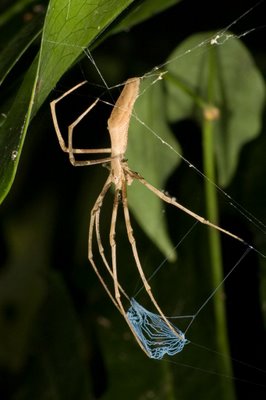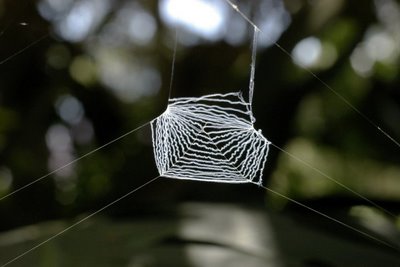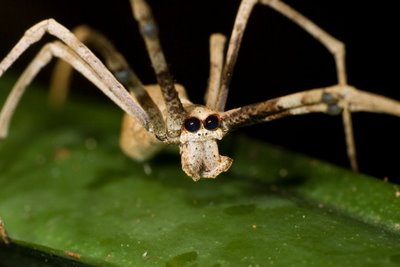 While I was out frogging a couple of weeks ago I was surprised to find a certain spider that I'm familiar with, Deinopis subrufa or the Net-Casting Spider. Surprised because it was the middle of Winter, when most honest invertebrates are dead, inactive or overwintering as eggs. So, an opportunity to show some photos and describe the species. Of course, a lot of you would have already learnt about this critter from Life in the Undergrowth (funnily enough it was actually I who suggested it for inclusion in the series to one of the BBC team's researchers).
While I was out frogging a couple of weeks ago I was surprised to find a certain spider that I'm familiar with, Deinopis subrufa or the Net-Casting Spider. Surprised because it was the middle of Winter, when most honest invertebrates are dead, inactive or overwintering as eggs. So, an opportunity to show some photos and describe the species. Of course, a lot of you would have already learnt about this critter from Life in the Undergrowth (funnily enough it was actually I who suggested it for inclusion in the series to one of the BBC team's researchers).As you can see, Deinopis doesn't build a web. Rather, it creates the small rectangular net out of a wooly bluish silk (below left), and holds the corners as it hangs from silken infrastructure at night. When an unsuspecting prey item trundles past below it, the spider stretches the net out and down over its victim. The spider relies heavily on its vision to spot its prey, and to do this has some spectacular eyes.


I found out something interesting about this animal's eyes recently. Photoreceptor cells have photopigments residing on their membranes, so a high surface area is required to pack in lots of pigment and absorb lots of light. This is achieved by having cilia or microvilli (rhabdomeres).
So you'd expect a creature like Deinopis to have receptors packed with rhabdomeres. However, if you were to grab a spider in the daytime and have a look at its photoreceptors, you'd find that its receptors had only about 15% of their space occupied by rhabdomeres - not too impressive. But during the daytime, the spider just rests and doesn't need to see very well; plus there's a lot more light available. In the night-time, when it's ready for ambush, if you looked at its receptors again, you'd find that a whopping 90% of each receptor's space is filled with rhabdomeres. That increase translates to a 74% photon catch at night-time compared with 6% in the day! About 2 hours after sunrise, the spider is actually destroying the (presumably costly) surplus membrane and then rebuilding it at dusk.
Oh - and another tidbit about the eyes of this animal: they're single-lensed, just like ours and unlike the compound eyes of insects. And for the photographers out there that drool over lenses that are f/1.2, consider the F-number of the eyes of this spider: f/0.58! Human eyes come in much more poorly at about f/2.1 in the dark and f/8.3 in bright light.
References:
Blest, A. D., 1978. The rapid synthesis and destruction of photoreceptor membrane by a dinopid spider: a daily cycle. Proceedings of the Royal Society of London Series B. 200:463-483.




1 comment:
*puts cutlery down*
Wow! That was well worth the wait!
Post a Comment